-
Notifications
You must be signed in to change notification settings - Fork 6.3k
t2i pipeline #3932
New issue
Have a question about this project? Sign up for a free GitHub account to open an issue and contact its maintainers and the community.
By clicking “Sign up for GitHub”, you agree to our terms of service and privacy statement. We’ll occasionally send you account related emails.
Already on GitHub? Sign in to your account
Merged
williamberman
merged 10 commits into
huggingface:main
from
williamberman:will/general-adapter_
Jul 17, 2023
Merged
t2i pipeline #3932
Changes from all commits
Commits
Show all changes
10 commits
Select commit
Hold shift + click to select a range
1d0b1a5
Quick implementation of t2i-adapter
HimariO feafd19
fix sample inplace add
williamberman b75b507
additional_kwargs -> additional_residuals
williamberman b0f356c
move t2i adapter pipeline to own module
williamberman bd2201f
preprocess -> _preprocess_adapter_image
williamberman d66631a
add TencentArc to license
williamberman f706918
fix example code links
williamberman ec03194
add image converter and fix example doc string
williamberman 80a1452
fix links
williamberman a640ecf
clearer additional residual application
williamberman File filter
Filter by extension
Conversations
Failed to load comments.
Loading
Jump to
Jump to file
Failed to load files.
Loading
Diff view
Diff view
There are no files selected for viewing
This file contains hidden or bidirectional Unicode text that may be interpreted or compiled differently than what appears below. To review, open the file in an editor that reveals hidden Unicode characters.
Learn more about bidirectional Unicode characters
This file contains hidden or bidirectional Unicode text that may be interpreted or compiled differently than what appears below. To review, open the file in an editor that reveals hidden Unicode characters.
Learn more about bidirectional Unicode characters
187 changes: 187 additions & 0 deletions
187
docs/source/en/api/pipelines/stable_diffusion/adapter.mdx
This file contains hidden or bidirectional Unicode text that may be interpreted or compiled differently than what appears below. To review, open the file in an editor that reveals hidden Unicode characters.
Learn more about bidirectional Unicode characters
| Original file line number | Diff line number | Diff line change |
|---|---|---|
| @@ -0,0 +1,187 @@ | ||
| <!--Copyright 2023 The HuggingFace Team. All rights reserved. | ||
|
|
||
| Licensed under the Apache License, Version 2.0 (the "License"); you may not use this file except in compliance with | ||
| the License. You may obtain a copy of the License at | ||
|
|
||
| http://www.apache.org/licenses/LICENSE-2.0 | ||
|
|
||
| Unless required by applicable law or agreed to in writing, software distributed under the License is distributed on | ||
| an "AS IS" BASIS, WITHOUT WARRANTIES OR CONDITIONS OF ANY KIND, either express or implied. See the License for the | ||
| specific language governing permissions and limitations under the License. | ||
| --> | ||
|
|
||
| # Text-to-Image Generation with Adapter Conditioning | ||
|
|
||
| ## Overview | ||
|
|
||
| [T2I-Adapter: Learning Adapters to Dig out More Controllable Ability for Text-to-Image Diffusion Models](https://arxiv.org/abs/2302.08453) by Chong Mou, Xintao Wang, Liangbin Xie, Jian Zhang, Zhongang Qi, Ying Shan, Xiaohu Qie. | ||
|
|
||
| Using the pretrained models we can provide control images (for example, a depth map) to control Stable Diffusion text-to-image generation so that it follows the structure of the depth image and fills in the details. | ||
|
|
||
| The abstract of the paper is the following: | ||
|
|
||
| *The incredible generative ability of large-scale text-to-image (T2I) models has demonstrated strong power of learning complex structures and meaningful semantics. However, relying solely on text prompts cannot fully take advantage of the knowledge learned by the model, especially when flexible and accurate structure control is needed. In this paper, we aim to ``dig out" the capabilities that T2I models have implicitly learned, and then explicitly use them to control the generation more granularly. Specifically, we propose to learn simple and small T2I-Adapters to align internal knowledge in T2I models with external control signals, while freezing the original large T2I models. In this way, we can train various adapters according to different conditions, and achieve rich control and editing effects. Further, the proposed T2I-Adapters have attractive properties of practical value, such as composability and generalization ability. Extensive experiments demonstrate that our T2I-Adapter has promising generation quality and a wide range of applications.* | ||
|
|
||
| This model was contributed by the community contributor [HimariO](https://github.com/HimariO) ❤️ . | ||
|
|
||
| ## Available Pipelines: | ||
|
|
||
| | Pipeline | Tasks | Demo | ||
| |---|---|:---:| | ||
| | [StableDiffusionAdapterPipeline](https://github.com/huggingface/diffusers/blob/main/src/diffusers/pipelines/stable_diffusion/pipeline_stable_diffusion_adapter.py) | *Text-to-Image Generation with T2I-Adapter Conditioning* | - | ||
|
|
||
| ## Usage example | ||
|
|
||
| In the following we give a simple example of how to use a *T2IAdapter* checkpoint with Diffusers for inference. | ||
| All adapters use the same pipeline. | ||
|
|
||
| 1. Images are first converted into the appropriate *control image* format. | ||
| 2. The *control image* and *prompt* are passed to the [`StableDiffusionAdapterPipeline`]. | ||
|
|
||
| Let's have a look at a simple example using the [Color Adapter](https://huggingface.co/TencentARC/t2iadapter_color_sd14v1). | ||
|
|
||
| ```python | ||
| from diffusers.utils import load_image | ||
|
|
||
| image = load_image("https://huggingface.co/datasets/diffusers/docs-images/resolve/main/t2i-adapter/color_ref.png") | ||
| ``` | ||
|
|
||
| 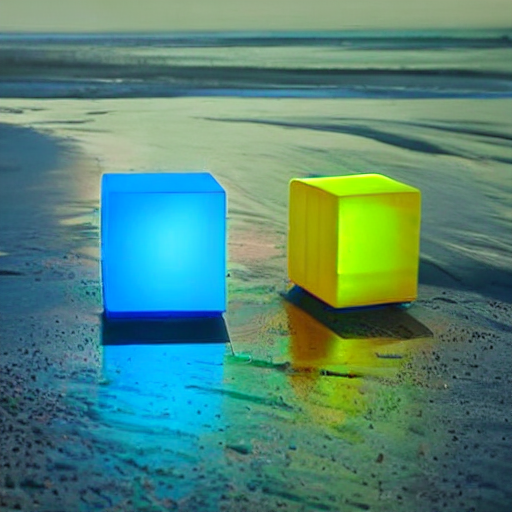 | ||
|
|
||
|
|
||
| Then we can create our color palette by simply resizing it to 8 by 8 pixels and then scaling it back to original size. | ||
|
|
||
| ```python | ||
| from PIL import Image | ||
|
|
||
| color_palette = image.resize((8, 8)) | ||
| color_palette = color_palette.resize((512, 512), resample=Image.Resampling.NEAREST) | ||
williamberman marked this conversation as resolved.
Show resolved
Hide resolved
|
||
| ``` | ||
|
|
||
| Let's take a look at the processed image. | ||
|
|
||
| 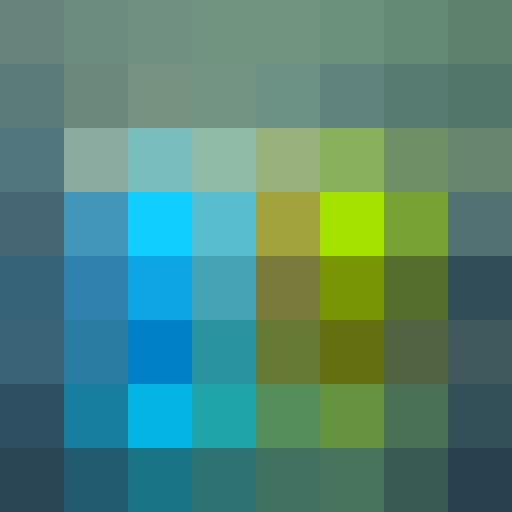 | ||
|
|
||
|
|
||
| Next, create the adapter pipeline | ||
|
|
||
| ```py | ||
| import torch | ||
| from diffusers import StableDiffusionAdapterPipeline, T2IAdapter | ||
|
|
||
| adapter = T2IAdapter.from_pretrained("TencentARC/t2iadapter_color_sd14v1") | ||
| pipe = StableDiffusionAdapterPipeline.from_pretrained( | ||
| "CompVis/stable-diffusion-v1-4", | ||
| adapter=adapter, | ||
| torch_dtype=torch.float16, | ||
| ) | ||
| pipe.to("cuda") | ||
| ``` | ||
|
|
||
| Finally, pass the prompt and control image to the pipeline | ||
|
|
||
| ```py | ||
| # fix the random seed, so you will get the same result as the example | ||
| generator = torch.manual_seed(7) | ||
|
|
||
| out_image = pipe( | ||
| "At night, glowing cubes in front of the beach", | ||
| image=color_palette, | ||
| generator=generator, | ||
| ).images[0] | ||
| ``` | ||
|
|
||
| 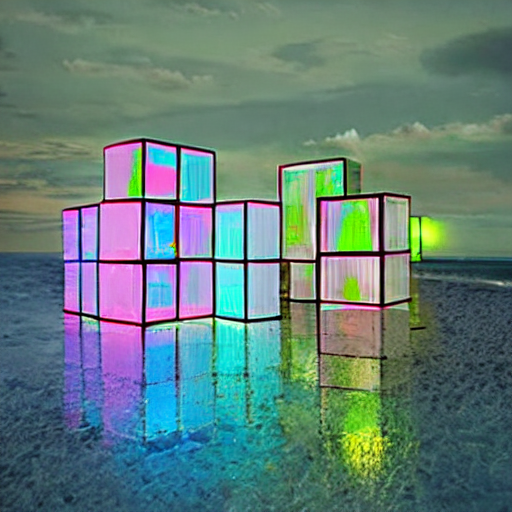 | ||
|
|
||
|
|
||
| ## Available checkpoints | ||
|
|
||
| Non-diffusers checkpoints can be found under [TencentARC/T2I-Adapter](https://huggingface.co/TencentARC/T2I-Adapter/tree/main/models). | ||
|
|
||
| ### T2I-Adapter with Stable Diffusion 1.4 | ||
|
|
||
| | Model Name | Control Image Overview| Control Image Example | Generated Image Example | | ||
| |---|---|---|---| | ||
| |[TencentARC/t2iadapter_color_sd14v1](https://huggingface.co/TencentARC/t2iadapter_color_sd14v1)<br/> *Trained with spatial color palette* | A image with 8x8 color palette.|<a href="https://huggingface.co/datasets/diffusers/docs-images/resolve/main/t2i-adapter/color_sample_input.png"><img width="64" style="margin:0;padding:0;" src="https://huggingface.co/datasets/diffusers/docs-images/resolve/main/t2i-adapter/color_sample_input.png"/></a>|<a href="https://huggingface.co/datasets/diffusers/docs-images/resolve/main/t2i-adapter/color_sample_output.png"><img width="64" src="https://huggingface.co/datasets/diffusers/docs-images/resolve/main/t2i-adapter/color_sample_output.png"/></a>| | ||
| |[TencentARC/t2iadapter_canny_sd14v1](https://huggingface.co/TencentARC/t2iadapter_canny_sd14v1)<br/> *Trained with canny edge detection* | A monochrome image with white edges on a black background.|<a href="https://huggingface.co/datasets/diffusers/docs-images/resolve/main/t2i-adapter/canny_sample_input.png"><img width="64" style="margin:0;padding:0;" src="https://huggingface.co/datasets/diffusers/docs-images/resolve/main/t2i-adapter/canny_sample_input.png"/></a>|<a href="https://huggingface.co/datasets/diffusers/docs-images/resolve/main/t2i-adapter/canny_sample_output.png"><img width="64" src="https://huggingface.co/datasets/diffusers/docs-images/resolve/main/t2i-adapter/canny_sample_output.png"/></a>| | ||
| |[TencentARC/t2iadapter_sketch_sd14v1](https://huggingface.co/TencentARC/t2iadapter_sketch_sd14v1)<br/> *Trained with [PidiNet](https://github.com/zhuoinoulu/pidinet) edge detection* | A hand-drawn monochrome image with white outlines on a black background.|<a href="https://huggingface.co/datasets/diffusers/docs-images/resolve/main/t2i-adapter/sketch_sample_input.png"><img width="64" style="margin:0;padding:0;" src="https://huggingface.co/datasets/diffusers/docs-images/resolve/main/t2i-adapter/sketch_sample_input.png"/></a>|<a href="https://huggingface.co/datasets/diffusers/docs-images/resolve/main/t2i-adapter/sketch_sample_output.png"><img width="64" src="https://huggingface.co/datasets/diffusers/docs-images/resolve/main/t2i-adapter/sketch_sample_output.png"/></a>| | ||
| |[TencentARC/t2iadapter_depth_sd14v1](https://huggingface.co/TencentARC/t2iadapter_depth_sd14v1)<br/> *Trained with Midas depth estimation* | A grayscale image with black representing deep areas and white representing shallow areas.|<a href="https://huggingface.co/datasets/diffusers/docs-images/resolve/main/t2i-adapter/depth_sample_input.png"><img width="64" src="https://huggingface.co/datasets/diffusers/docs-images/resolve/main/t2i-adapter/depth_sample_input.png"/></a>|<a href="https://huggingface.co/datasets/diffusers/docs-images/resolve/main/t2i-adapter/depth_sample_output.png"><img width="64" src="https://huggingface.co/datasets/diffusers/docs-images/resolve/main/t2i-adapter/depth_sample_output.png"/></a>| | ||
| |[TencentARC/t2iadapter_openpose_sd14v1](https://huggingface.co/TencentARC/t2iadapter_openpose_sd14v1)<br/> *Trained with OpenPose bone image* | A [OpenPose bone](https://github.com/CMU-Perceptual-Computing-Lab/openpose) image.|<a href="https://huggingface.co/datasets/diffusers/docs-images/resolve/main/t2i-adapter/openpose_sample_input.png"><img width="64" src="https://huggingface.co/datasets/diffusers/docs-images/resolve/main/t2i-adapter/openpose_sample_input.png"/></a>|<a href="https://huggingface.co/datasets/diffusers/docs-images/resolve/main/t2i-adapter/openpose_sample_output.png"><img width="64" src="https://huggingface.co/datasets/diffusers/docs-images/resolve/main/t2i-adapter/openpose_sample_output.png"/></a>| | ||
| |[TencentARC/t2iadapter_keypose_sd14v1](https://huggingface.co/TencentARC/t2iadapter_keypose_sd14v1)<br/> *Trained with mmpose skeleton image* | A [mmpose skeleton](https://github.com/open-mmlab/mmpose) image.|<a href="https://huggingface.co/datasets/diffusers/docs-images/resolve/main/t2i-adapter/keypose_sample_input.png"><img width="64" src="https://huggingface.co/datasets/diffusers/docs-images/resolve/main/t2i-adapter/keypose_sample_input.png"/></a>|<a href="https://huggingface.co/datasets/diffusers/docs-images/resolve/main/t2i-adapter/keypose_sample_output.png"><img width="64" src="https://huggingface.co/datasets/diffusers/docs-images/resolve/main/t2i-adapter/keypose_sample_output.png"/></a>| | ||
| |[TencentARC/t2iadapter_seg_sd14v1](https://huggingface.co/TencentARC/t2iadapter_seg_sd14v1)<br/>*Trained with semantic segmentation* | An [custom](https://github.com/TencentARC/T2I-Adapter/discussions/25) segmentation protocol image.|<a href="https://huggingface.co/datasets/diffusers/docs-images/resolve/main/t2i-adapter/seg_sample_input.png"><img width="64" src="https://huggingface.co/datasets/diffusers/docs-images/resolve/main/t2i-adapter/seg_sample_input.png"/></a>|<a href="https://huggingface.co/datasets/diffusers/docs-images/resolve/main/t2i-adapter/seg_sample_output.png"><img width="64" src="https://huggingface.co/datasets/diffusers/docs-images/resolve/main/t2i-adapter/seg_sample_output.png"/></a> | | ||
| |[TencentARC/t2iadapter_canny_sd15v2](https://huggingface.co/TencentARC/t2iadapter_canny_sd15v2)|| | ||
| |[TencentARC/t2iadapter_depth_sd15v2](https://huggingface.co/TencentARC/t2iadapter_depth_sd15v2)|| | ||
| |[TencentARC/t2iadapter_sketch_sd15v2](https://huggingface.co/TencentARC/t2iadapter_sketch_sd15v2)|| | ||
| |[TencentARC/t2iadapter_zoedepth_sd15v1](https://huggingface.co/TencentARC/t2iadapter_zoedepth_sd15v1)|| | ||
|
|
||
| ## Combining multiple adapters | ||
|
|
||
| [`MultiAdapter`] can be used for applying multiple conditionings at once. | ||
|
|
||
| Here we use the keypose adapter for the character posture and the depth adapter for creating the scene. | ||
|
|
||
| ```py | ||
| import torch | ||
| from PIL import Image | ||
| from diffusers.utils import load_image | ||
|
|
||
| cond_keypose = load_image( | ||
| "https://huggingface.co/datasets/diffusers/docs-images/resolve/main/t2i-adapter/keypose_sample_input.png" | ||
| ) | ||
| cond_depth = load_image( | ||
| "https://huggingface.co/datasets/diffusers/docs-images/resolve/main/t2i-adapter/depth_sample_input.png" | ||
| ) | ||
| cond = [[cond_keypose, cond_depth]] | ||
|
|
||
| prompt = ["A man walking in an office room with a nice view"] | ||
| ``` | ||
|
|
||
| The two control images look as such: | ||
|
|
||
| 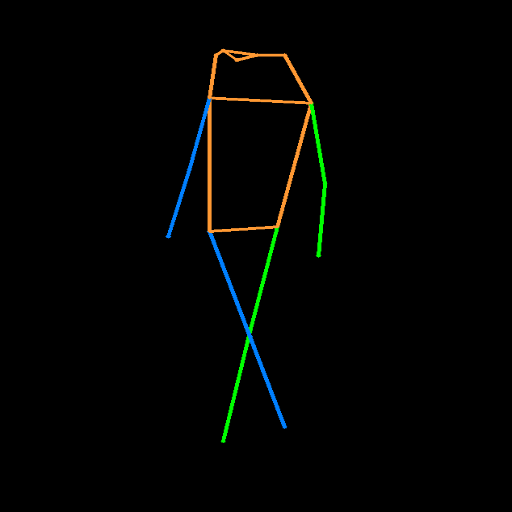 | ||
| 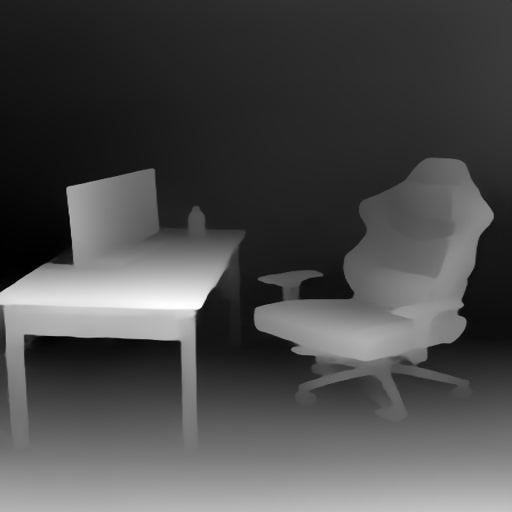 | ||
|
|
||
|
|
||
| `MultiAdapter` combines keypose and depth adapters. | ||
|
|
||
| `adapter_conditioning_scale` balances the relative influence of the different adapters. | ||
|
|
||
| ```py | ||
| from diffusers import StableDiffusionAdapterPipeline, MultiAdapter | ||
|
|
||
| adapters = MultiAdapter( | ||
| [ | ||
| T2IAdapter.from_pretrained("TencentARC/t2iadapter_keypose_sd14v1"), | ||
| T2IAdapter.from_pretrained("TencentARC/t2iadapter_depth_sd14v1"), | ||
| ] | ||
| ) | ||
| adapters = adapters.to(torch.float16) | ||
|
|
||
| pipe = StableDiffusionAdapterPipeline.from_pretrained( | ||
| "CompVis/stable-diffusion-v1-4", | ||
| torch_dtype=torch.float16, | ||
| adapter=adapters, | ||
| ) | ||
|
|
||
| images = pipe(prompt, cond, adapter_conditioning_scale=[0.8, 0.8]) | ||
| ``` | ||
|
|
||
|  | ||
|
|
||
|
|
||
| ## T2I Adapter vs ControlNet | ||
|
|
||
| T2I-Adapter is similar to [ControlNet](https://huggingface.co/docs/diffusers/main/en/api/pipelines/controlnet). | ||
| T2i-Adapter uses a smaller auxiliary network which is only run once for the entire diffusion process. | ||
| However, T2I-Adapter performs slightly worse than ControlNet. | ||
|
|
||
| ## StableDiffusionAdapterPipeline | ||
| [[autodoc]] StableDiffusionAdapterPipeline | ||
| - all | ||
| - __call__ | ||
| - enable_attention_slicing | ||
| - disable_attention_slicing | ||
| - enable_vae_slicing | ||
| - disable_vae_slicing | ||
| - enable_xformers_memory_efficient_attention | ||
| - disable_xformers_memory_efficient_attention | ||
This file contains hidden or bidirectional Unicode text that may be interpreted or compiled differently than what appears below. To review, open the file in an editor that reveals hidden Unicode characters.
Learn more about bidirectional Unicode characters
This file contains hidden or bidirectional Unicode text that may be interpreted or compiled differently than what appears below. To review, open the file in an editor that reveals hidden Unicode characters.
Learn more about bidirectional Unicode characters
Oops, something went wrong.
Add this suggestion to a batch that can be applied as a single commit.
This suggestion is invalid because no changes were made to the code.
Suggestions cannot be applied while the pull request is closed.
Suggestions cannot be applied while viewing a subset of changes.
Only one suggestion per line can be applied in a batch.
Add this suggestion to a batch that can be applied as a single commit.
Applying suggestions on deleted lines is not supported.
You must change the existing code in this line in order to create a valid suggestion.
Outdated suggestions cannot be applied.
This suggestion has been applied or marked resolved.
Suggestions cannot be applied from pending reviews.
Suggestions cannot be applied on multi-line comments.
Suggestions cannot be applied while the pull request is queued to merge.
Suggestion cannot be applied right now. Please check back later.
Uh oh!
There was an error while loading. Please reload this page.